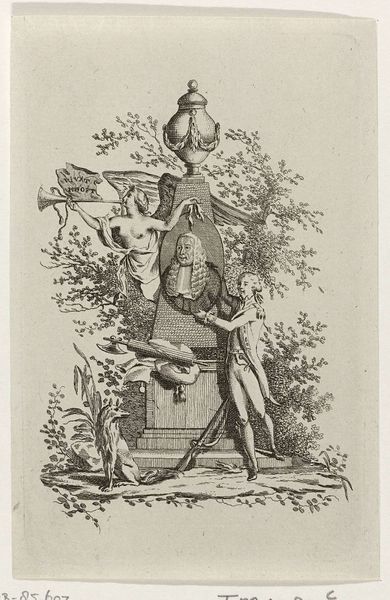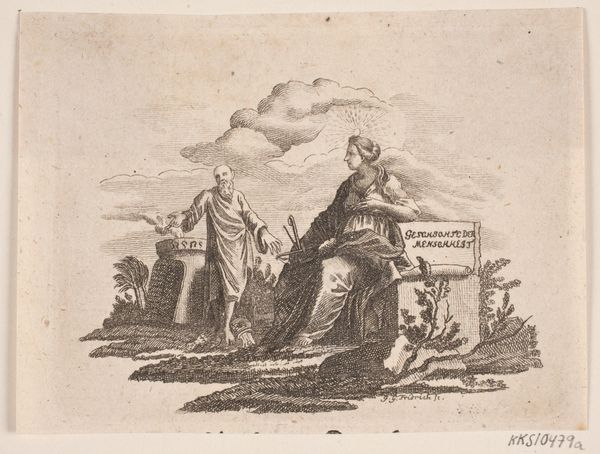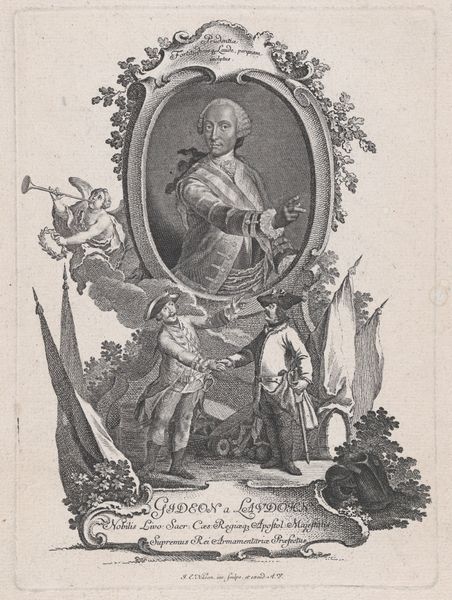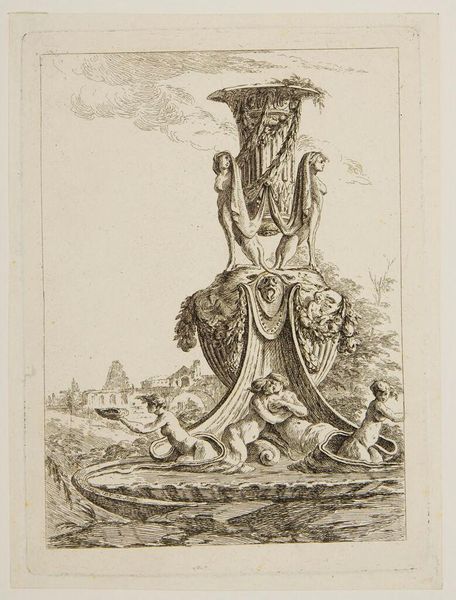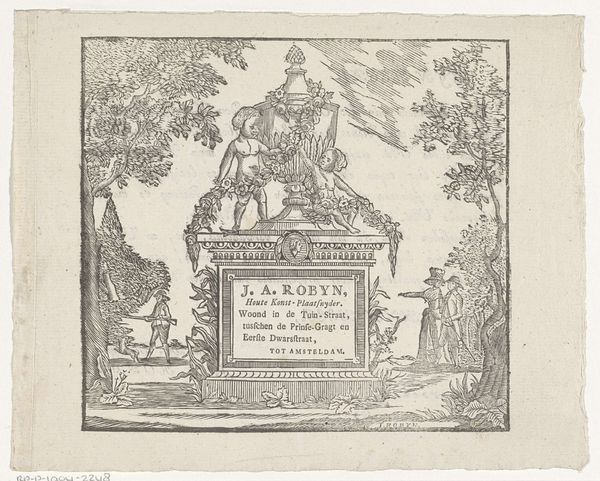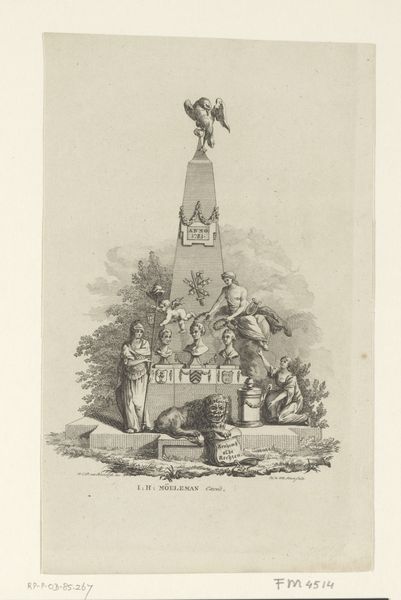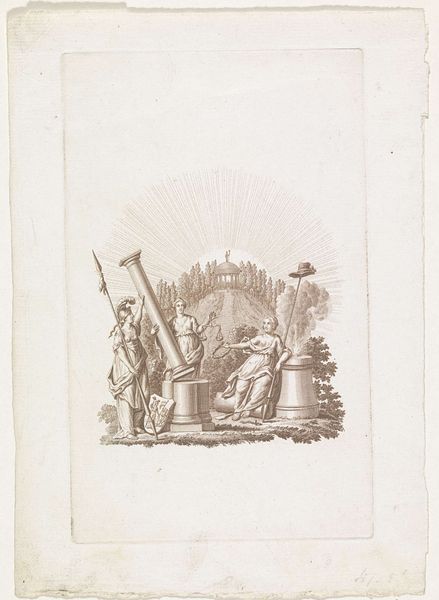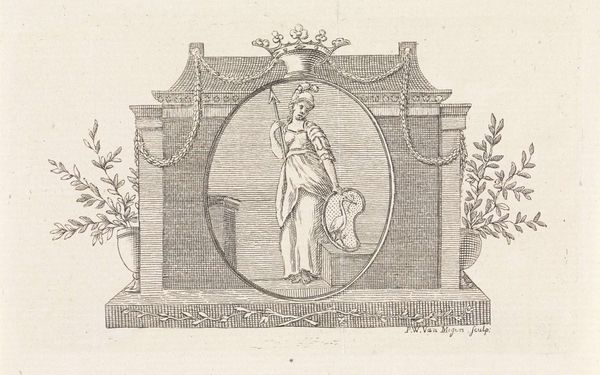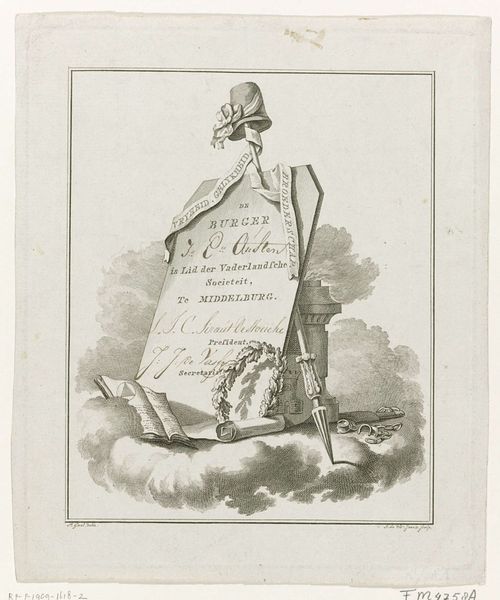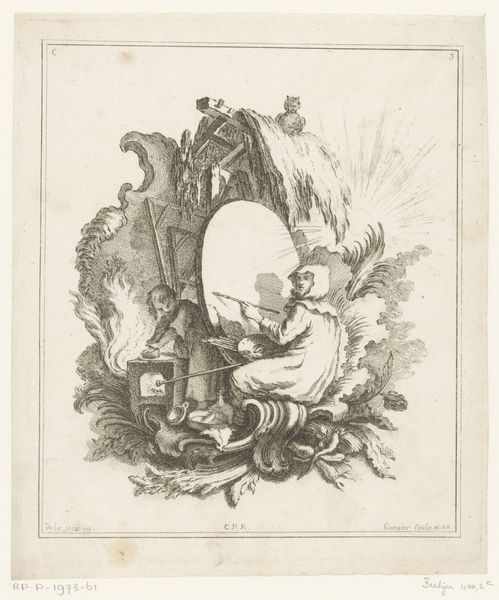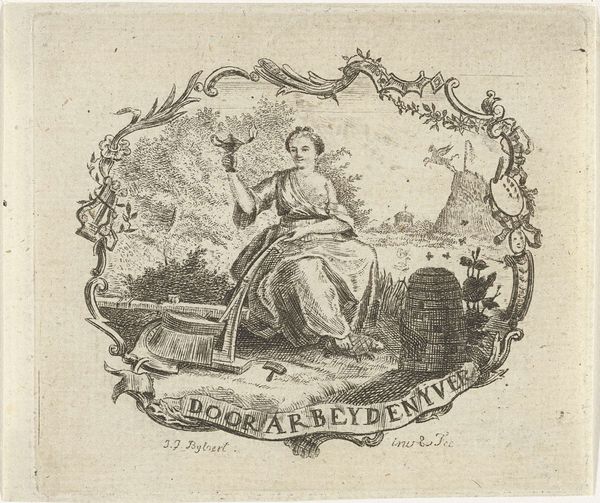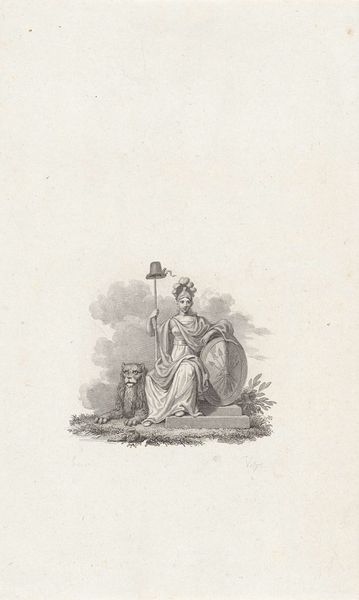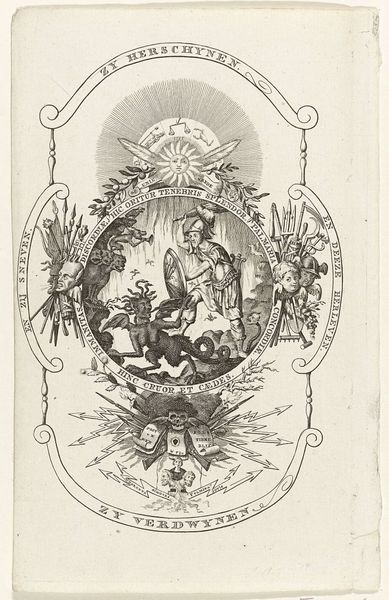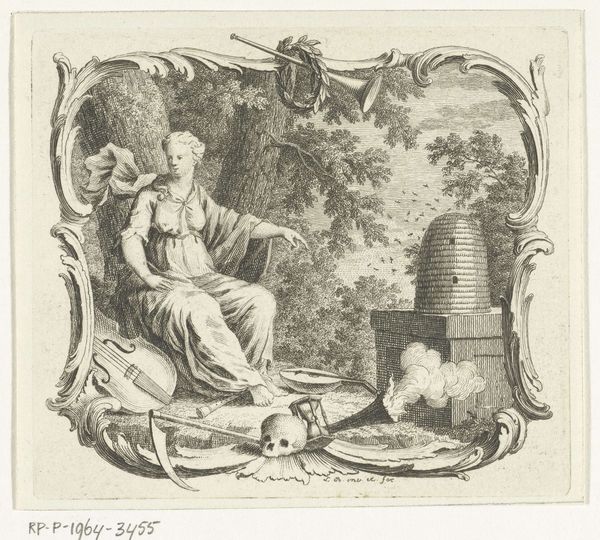
print, etching, engraving
#
neoclacissism
#
allegory
# print
#
etching
#
pencil sketch
#
figuration
#
geometric
#
romanticism
#
pen-ink sketch
#
line
#
sketchbook drawing
#
history-painting
#
engraving
Dimensions: height 115 mm, width 150 mm
Copyright: Rijks Museum: Open Domain
Curator: So, here we have "Patriots vignet, 1795," created by Johannes Jelgerhuis. It's an etching and engraving, currently residing at the Rijksmuseum. It almost whispers history, doesn't it? Editor: It does! It feels so delicate, almost like a faded dream. All those symbols... a woman in classical garb, a cannon, even a rooster. It makes me think of a history textbook illustration, but far more intriguing. How do you interpret this work? Curator: For me, it's a peek into the tumultuous spirit of the late 18th century. Think about the French Revolution rumbling in the background. This isn't just decoration, it is brimming with meaning, wouldn't you say? The figure, perhaps a symbol of liberty, holding the shield and that peculiar rooster - representing watchfulness or maybe even defiance? And that broken chain, lying so helpless next to a very anxious looking canine - doesn’t that evoke a sense of liberation after a struggle? Editor: Absolutely! Now that you mention the rooster, I see a bolder statement. What about the cannon and cannonballs? Are they more straightforward, symbolizing power? Curator: Exactly, power, and perhaps a subtle threat, a reminder that freedom comes at a cost. But it's not aggressive, more like a quiet resolve. Editor: It's amazing how much complexity can be packed into such a small, subtle piece. It shows how everyday objects can be imbued with layers of meaning in tumultuous times. Curator: Precisely. Art doesn't always have to shout to be heard, does it? Sometimes the most powerful statements are whispered.
Comments
No comments
Be the first to comment and join the conversation on the ultimate creative platform.
